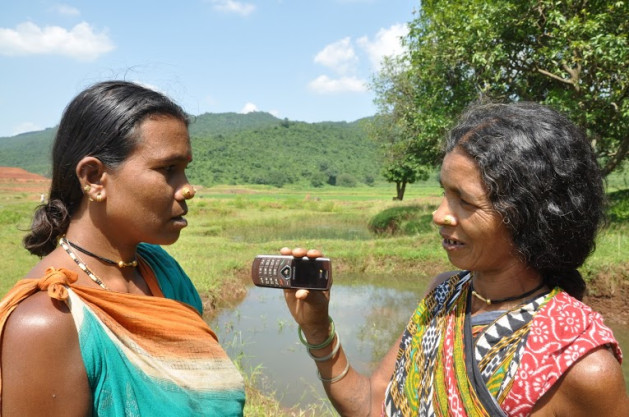
Fighting for Forests: Digitalisation and Politicisation of the Tribes
Tribes in India constitute over 9 percent of India’s population according to NSSO. This is a significant number. However, some states in India are overwhelming tribal dominated and some states have a significant population of the tribes which can tilt the balance of power. Just like the Scheduled Castes and the Other Backward classes, the Scheduled Tribes are divided into several castes all over India and they are diverse, for example, Meena of Rajasthan are very much different and diverse from the Santhals of Jharkhand. The tribes in the North East India are different than the other tribals. The tribes in the central India mainly live in the forest. The forests have been the territories of the tribals. They have been worst affected by the land grabbing and deforestation. They have been the victims of unbridled mining in the forests.
The traditional locations of the tribals have been affected because of many factors, but primary among them is the encroachment on their habitat by the dominant industrialists and mining tycoons. In some places, the state could reach, nor it existed to solve the grievances of the tribals and Naxalite movement found an easy recruiting ground for their war on India’s democratic government. The tribals belt is in the grips of the Naxalite movement. The constitution of India accorded the rightful status to the Tribals, which not included the traditional tribes, but also those castes which live in the remotest part of our country. The Forest Rights Act was enacted in 2006 by the then UPA Government. This very Forest Right Act has become the battleground for the RSS/BJP and the Congress to claim their monopoly over the tribals as the upcoming political constituency.
The states of Chattisgarh and Jharkhand are predominantly tribals states. The tribal population determines the political outcome. In Jharkhand, the Santhalis are politically and numerically strong. Chattisgarh is completely hijacked by the upper castes. It is a tribal state run by an upper caste without having sufficient numerical community strength behind him. But also Gujarat and Maharashtra have a significant number of tribal population.
This is what is RSS/BJP doing to attract the tribals. It is planning to start hi-tech tribal museums to showcase “the contribution of the tribals in the freedom fight”. So far, eleven BJP ruled states have been contemplating such museums in their respective states to attract Tribals. However, the significant question is why the tribes are not yet free from the oppression of the upper caste and capitalists axis. Are they really free? The previous forest acts have taken their land and their habitat making them practically homeless and resource-less. Tribals certainly need museums, but not just to show their contribution to the “freedom struggle”, but to showcase their plights and their fight for the human rights which have been snatched away from them. The idea of tribal museums for the tribal freedom fighters is a political ploy. Birsa Munda not only fought against the British, but he also fought against land grabbing upper castes. The museum must showcase their struggle for dignified human life and human rights. The BJP is also coming up with an “App” called “Tribal diaries” where the tribals will post how the “Forest Right Act” benefitted them. They will show what kind of land patta they got and how their land was restored. Importantly, the problem of tribals is that their land is usurped and they are fighting back to get their homes back. The Forest Right Act 2006 was welcome in redressing that, but the larger question will be how to stop the interference of the miners. The Vedanta is one of the major players in mining and gives heavy tribute to the RSS/BJP. It will important to stop them or control them so that the tribals have their habitats secured. This is what broadly the BJP doing, luring the tribals by hi-tech museums and a mobile app to show what they got from the state.
The Congress has lost ground among the tribals. It is planning to win the lost ground by creating a team of volunteers called “Mitra” who would go to tribals villages and show how the Forest Right Act was not effectively used by the BJP.
The tribal movement is basically a social justice movement. It has power to transform Indian social and political space and therefore the natural allies of the tribals are Dalits who are fighting the similar battle. In fact, the world Dalit also included tribals when the Dalit panther movement started in Maharashtra. The unity between the Dalits and Tribals is a much-desired goal, but the caste system and the political ploy by the dominant caste do not let this unity become a possibility. In the context of declining BSP, the party that emerged from the social movement, the tribals have to choose between the two evils of the BJP and the Congress. The tribals knew that they are not their friends, and the strong handshake of friendship from the Dalits can be a reassuring gesture for the Tribals, which will stop the tribals from becoming a shuttlecock between two deceptive political parties. In the long run, the independent political voice of the tribals amplified together with the Dalit voice is the only solution.



+ There are no comments
Add yours